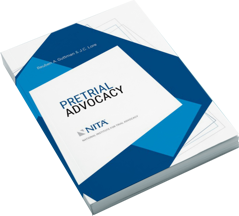On October 7, 2016, the Third Circuit underscored the need for employers to compensate all hours worked by non-exempt employees even when employers pay employees for break time they could treat as non-compensable under the Fair Labor Standards Act (“FLSA”).
In Smiley v. E.I. DuPont De Nemours & Company, plaintiffs filed an FLSA collective action and Pennsylvania state law class action seeking compensation for unpaid time spent donning and doffing uniforms and safety gear and performing other activities before and after their shifts. Unpaid time averaged 30-60 minutes per day.
Under DuPont’s written policy, plaintiffs working 12-hour shifts were paid for a 30-minute meal break and two other 30-minute breaks per shift. DuPont classified paid break time as hours worked for overtime purposes even though the FLSA does not require it to do so. For the employees at issue, paid break time always exceeded the unpaid pre-shift and post-shift donning and doffing time.
DuPont argued plaintiffs’ claims for unpaid overtime failed because it voluntarily treated break time as hours worked, such that the time qualified as an offset against the 30-60 minutes of daily unpaid pre-shift and post-shift time. The District Court agreed with DuPont and dismissed plaintiffs’ lawsuit in its entirety.
On appeal, the Third Circuit rejected DuPont’s offset argument and overturned the dismissal. After focusing on the FLSA’s “broad remedial purpose,” the Court noted that employers have some flexibility when considering whether to treat bona fide meal breaks as hours worked but held the FLSA explicitly permits offsets against overtime pay only in three specific situations, none of which addressed paid meal breaks.
The Third Circuit concluded that nothing in the FLSA authorized an employer to offset discretionary compensation the employer included in calculating employees’ regular rate of pay. Even though the FLSA does not require DuPont to pay for meal and other breaks or to treat such time as hours worked, once it did so voluntarily, it could not use this time as an offset against other time spent working that it did not count for overtime purposes.
Smiley is an important lesson for employers to review pay practices and ensure that all hours worked by non-exempt employees are compensated. Even if an employer goes beyond what the FLSA requires and pays an employees for meal breaks, that generosity cannot be used to offset other potential overtime violations in the Third Circuit.
The Third Circuit’s decision underscores the need for technical compliance with FLSA requirements. If a pay practice is not expressly authorized by the FLSA or implementing regulations, the practice may be held to run afoul of its mandates and expose employers to class-based liability even if they have the best of intentions and are attempting to exceed its mandates. Smiley highlights the need for companies, particularly smaller companies and startups, to seek review of employment practices by sophisticated employment counsel.
GB’s experienced team of attorneys provide employment counseling and litigate employment matters on behalf of both employers and employees.
